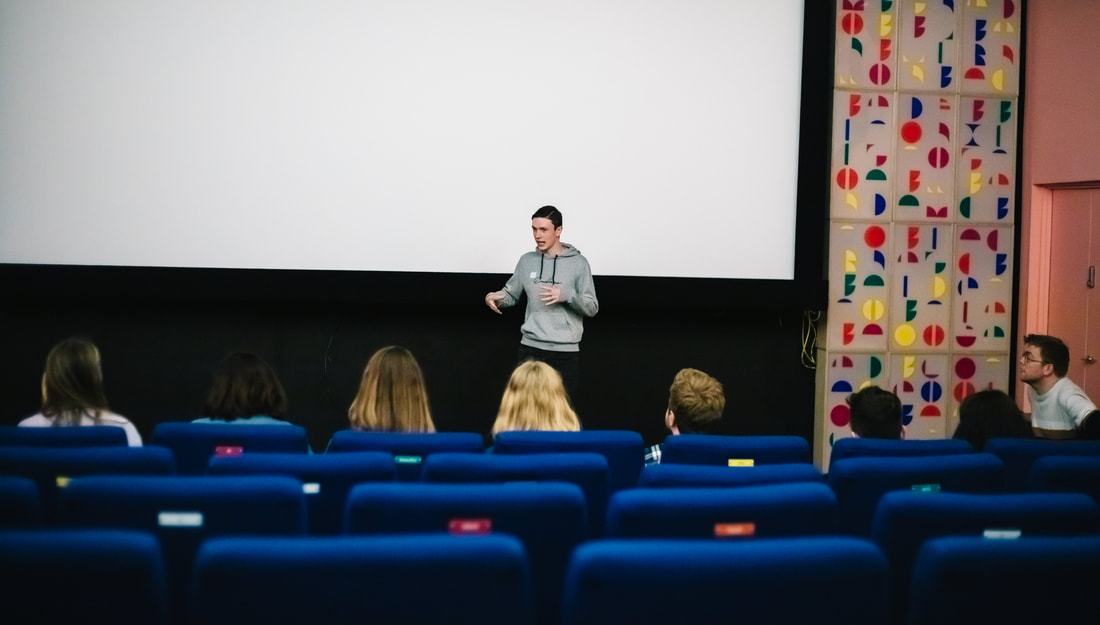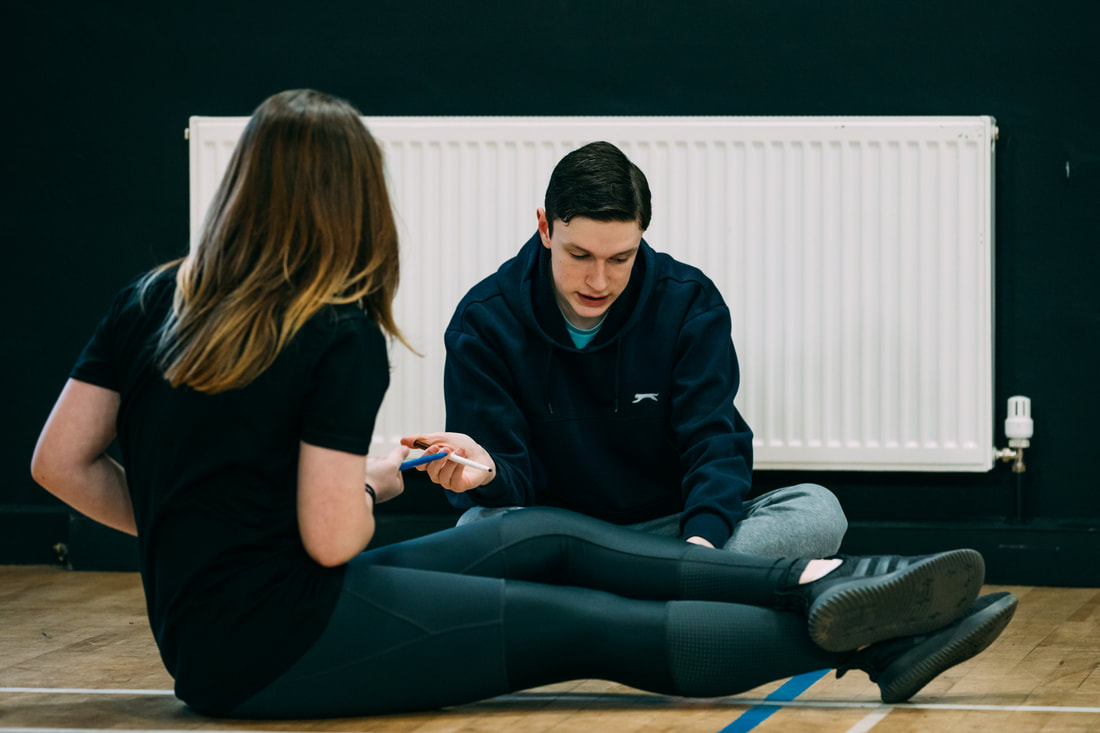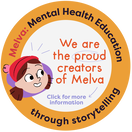|
In our creative projects and youth theatre spaces, we champion young people speaking their mind and challenging the norm. We encourage them to be curious - to interrogate, consider different perspectives, follow their interests, and use their time with us to try to make sense of the world and explore contemporary issues. Encompassing a large part of young people's everyday experiences, it's unsurprising that one topic often debated in our groups is school and education. Our young people often share their experiences, worries, hopes, feelings of disempowerment, and frustration towards a rigid system that doesn’t provide space for individualism - accompanied by discussion surrounding what they would change if they were in charge. Mortal Fools’ Ensemble Young Company Member and Young Leader Mark recently came up against the education system's arbitrary rules when choosing his A-Level subjects. So, as part of his Gold Arts Award, we challenged him to write us a blog post exploring the following provocation: The divide between the Arts and STEM subjects – in a world where we champion STEAM (Science Technology Engineering Arts Maths) as the future of innovation and the cornerstone of a better, greener, fairer world, why do we force so many young people to choose between Arts or STEM subjects at A-Level? Over to you Mark…. Who do young people have to choose between either an ‘art’ subject or a ‘STEM’ (Science Technology Engineering Maths) subject for A-Level? I struggled with these questions when I was choosing my sixth form subject options. My school would not allow me to take Maths and Drama together as they were seen as too disconnected. My teachers wanted me to choose a route: creativity or science. Whereas I believed that having both would be beneficial for all areas of my life and hugely complimentary. And I’m going use this blog post to tell you why, alongside some research I did on this subject... Articles focusing on educational choices found that one of the main reasons young people tend to be swayed to either a STEM route or Arts route is how the education system works and views the subjects as they exist in isolation. The way courses have evolved, and the structure of curriculums, means that any crossovers between subjects tend to only be from subjects they are directly linked to. For example, Physics and Maths would cross over with Engineering as they are under the umbrella term of 'STEM'. Similarly, English Literature and Drama would both focus on Shakespearian texts and other plays. However, this rigid form of subject teaching ignores the benefit of studying two contrasting ideologies. It reinforces the myth that you can be either left-brained - analytical and methodical - or right-brained - creative and artistic. Whereas the reality is a well-balanced innovator has to be both. This either/or mentality continues into university courses and apprenticeships. Students tend to be placed into categories that favour either science or creativity and this ends up channeling and restricting their thought processes; they tackle tasks in a tunnel of left brain or right brain dominance. Stereotypically, science students tend to think more methodically but lack a lot of the “out of the box” thinking that comes with studying and practicing the arts. With this, scientists tend to use ‘critical’ thinking whereas arts students tend to use ‘creative’ thinking. Many argue that this restriction of either/or is so society has the right people to enable growth and economic success. These strict routes allow for students to become potential experts in their particular subject and strong in their way of thinking. This makes logical sense – you do need there to be experts in STEM and experts in arts for a society to be successful, as Welsh (2019) explains: 'While scientists explore, in depth, the mechanisms that allow life to proceed (backed by mathematical and statistical proof), artists explore the truths of what it means to exist in space and time. Each is just as meaningful and important as the other.’ But what if individuals could be stronger, more successful, and happier if they were exposed to and able to study both? What if studying arts actually made you better in your STEM subjects – and vice versa? The binary either/or way of thinking tends to favour the STEM industries over the performing arts. STEM can be visible, tangible, results and systems focused. The arts is abstract, intangible sometimes; a subject labelled wrongly as just for enjoyment and playtime as opposed to a life necessity to wellbeing and the cornerstone of innovation. There has always been this negative view of arts subjects; they’re considered hobbies, an easier option, and that they don’t really factor in society growth, technology development, or means to earn an income. Therefore, STEM appears like the most logical step to take if you want to be successful, and students are dissuaded from bothering with the arts. As Haffner (2021) puts it: ‘to choose STEM is to abandon arts'. This is further encouraged by the general success rates of STEM careers versus the arts. People tend to view the only career pathway of someone who studies Drama or Music to be actor or musician, but according to a study by Queen Mary University of London, only 2% of actors make a living from the profession. This is a drastic contrast to the success rate of STEM careers such as scientists or engineers, with a success rate of well over 50% in the majority of areas. Obviously, the arts can lead to a much wider array of jobs and success – but this is rarely recorded, and students are fed these headline figures and not taught about creative career pathways, jobs available or the value of transferrable skills from creative subjects into the workplace. And so, young people ignore creative subjects. However, in our ever-changing world of technology and the rise of social media, is this necessarily the best route to take? Critical thinking might lead to innovations in research and discoveries by tackling complex problems in a logical way. However, one could argue that you would need more creative thinking to use the discovery to meaningfully benefit society, by matching innovation with opportunity; to creatively tackle societal issues with an open mind and to meet the rapidly changing needs of humanity. In fact, there is a movement over the last decade which has wanted to replace the acronym 'STEM' with 'STEAM', as a more accurate way of describing the skills people should study to enable a successful career. The new acronym stands for 'Science Technology Engineering Arts Mathematics'. This viewpoint is not to say that the arts and science are the same thing, but rather science can be much more clearly enabled and enhanced through the arts and can benefit from more creativity. STEAM is also used as a way to make STEM more relatable, understandable and enjoyable for those who might not use critical thinking as much or may struggle in the subjects – i.e., dominant right brainers who make sense of the world through intuition and creativity. And with the rise of platforms such as TikTok, influencers, and other careers in fields of content creation and communications becoming more popular, the ability to be creative and connect with others meaningfully is seen as a competitive advantage. Instead of having both ideologies separate, STEAM places the arts back in its rightful place as the enabler of innovation. In addition, lots of scientists would argue that science is the most creative and playful subject there is. Whilst the arts might be good for expressing ideas, science is about discovering the fundamentals of the universe we live in and then implementing that to our needs. This suggests that STEM could be the basis for the future of the arts and easily complement each other – both are about making sense of the world internally and externally. There is such untapped synergy by pushing STEM at the expense of STEAM. The fact of the matter is STEM and the arts can and should work alongside each other – they feed each other. Unfortunately, most leaders of society tend to see creativity as the complete opposite of economic success. That is the main issue, and this problem is built into us all from a very young age. As soon as we step foot into the classroom, we are conditioned to shed our creativity as we go through school life, or we have to make the full deep commitment to a creative career. Tunnel vision top trumps variety and choice. Personally, I believe that STEM and the arts taken together will be beneficial and complimentary, so I am taking Maths as a STEM subject alongside Music as an arts subject for my A-Levels - something I’ve had to really push for. Thank you, Mark! What are your thoughts on this topic? Share them in the comments below! References:
Welsh, S., 2019. The divide between art and science. [online] Martlet.ca. Available at: <https://www.martlet.ca/the-divide-between-art-and-science/> Braund, M., Reiss, M.J. The ‘Great Divide’: How the Arts Contribute to Science and Science Education. Can. J. Sci. Math. Techn. Educ. 19, 219–236 (2019). https://doi.org/10.1007/s42330-019-00057-7 Haffner, S., 2021. The Divide Between Art and Science - Montecito. [online] Montecito. Available at: <https://www.montecitojournal.net/2021/10/19/the-divide-between-art-and-science/> the Guardian. 2019. Only 2% of actors make a living. How do you become one of them? [online] Available at: <https://www.theguardian.com/film/shortcuts/2019/jun/05/only-2-per-cent-of-actors-make-a-living-how-do-you-become-one-of-them> Twistbioscience.com. 2020. STEM vs. STEAM, why STEM Should Welcome the Arts! | Twist Bioscience. [online] Available at: <https://www.twistbioscience.com/blog/perspectives/stem-vs-steam-why-stem-should-welcome-arts>
5 Comments
Jenni Sneddon-Brown
8/9/2022 09:59:04 am
This is such an important discussion and one which faces so many young people today. I, too, was a half and half student, loving science and music and art and was told not to do both. I didn’t listen and had the most fulfilling sixth form, learning exactly what I thought was worthy of my time. It did not disadvantage me at all. I wish you all the best. I would love to feature you within my project @projectcontextnortheast if you would like to share this story further. Well done, your passion really comes through.
Reply
8/11/2022 12:14:31 am
I did my A levels in the late 1970s, Maths, English and Music. I had to travel to a different school one day a week to be able to study music. I loved my years in 6th form . I went on to have a successful career that included performing, teaching and writing and I now run my own fashion business.
Reply
Elizabeth K
8/11/2022 09:27:39 am
I very much enjoyed reading your blog and wish you well with your Gold Arts Award - a great process to go through and a notable achievement .
Reply
Leave a Reply. |
Archives
June 2024
Categories
All
|
MELVA |
CONNECT WITH US |
CONTACT US0191 580 1250
[email protected] |
MAILING LIST |
|
HEAD OFFICE
YMCA Northumberland North View Ashington Northumberland NE63 9XQ |
|
PRUDHOE OFFICE
Spetchells Centre Front Street Prudhoe Northumberland NE42 5AA |
Mortal Fools is a company limited by guarantee and a registered charity. Company number: 8102487. Charity number: 1153400.
View our Privacy Policy here. View our Safeguarding Policy here.
View our Privacy Policy here. View our Safeguarding Policy here.




 RSS Feed
RSS Feed







